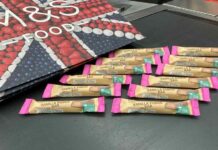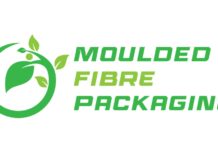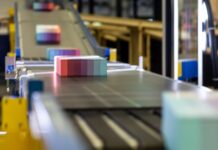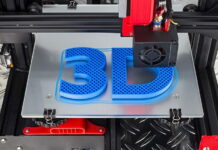Injection molding robots have emerged as indispensable assets in modern manufacturing, mimicking human hand and arm movements to execute programmed tasks seamlessly. They play a pivotal role in the plastic injection industry, enhancing safety, product quality, and production efficiency. This article discusses everything about injection molding robots, their benefits, classification, components, functions, and the evolving trends that are shaping their future.
The Advantages of Using Injection Molding Robots
Injection molding robots have garnered attention for several compelling reasons, as highlighted by Prototool, a prominent player in the injection molding sector:
- Safety Enhancement: One of the foremost advantages of employing injection molding robots in the production process is enhanced safety. These robots reduce the risk of accidents resulting from labor laws and regulations. By minimizing human contact with hot products and eliminating the manual removal of items from molds, they effectively prevent injuries and burns in the workplace. Additionally, injection molding robots are equipped with built-in mold protection features that automatically alert operators when products are not removed promptly, preventing potential mold damage.
- Guaranteed Product Quality: Automated mold ejection by injection molding robots prevents product scratches and contamination resulting from accidental drops, a common issue in manual handling. Inconsistent manual product removal can lead to shrinkage and deformation of products, while robots ensure consistent and precise handling, maintaining product quality. Furthermore, manual product removal often requires the closing of safety doors, which can prematurely age or damage the molding machine. Robots, on the other hand, ensure consistent injection quality while extending the machine’s lifespan.
- Enhanced Efficiency: Timely product delivery is crucial for maintaining a company’s reputation and competitiveness. Injection molding robots facilitate controlled production, ensuring products reach customers on schedule. With a relatively quick return on investment, capital expenditures can typically be recouped within six months. These robots significantly boost productivity and reduce production costs by stabilizing and enhancing the quality of injection-molded products, thus preventing losses due to human errors. Consequently, the role of injection molding robots in the manufacturing process has grown increasingly vital.
Classification of Injection Molding Robots
In the injection molding industry, robots are typically categorized based on their level of intelligence into two primary categories:
- Basic Injection Molding Robots: Basic robots operate with fixed-mode programs or teaching-mode programs tailored to the production process. Fixed mode programs encompass standard injection processes for routine actions, while teaching mode programs are customized for specific injection machines, sequencing standard actions to meet complex requirements.
- Intelligent Injection Molding: Robots Intelligent robots offer advanced features such as the ability to pause at any point, multiple-point memory placement, and multiple degrees of freedom. Driven by servo motors, they can mimic complex human hand and arm movements with precision. Some of these robots are equipped with advanced sensors, enabling tactile, visual, and even thermal capabilities, enhancing their overall intelligence.
Components of Injection Molding Robots
Injection molding robots are composed of three key components, each serving a crucial role in their operation:
- Execution System: The execution system functions as the robot’s “hands,” executing programmed actions with precision, such as gripping, handling, or operating tools.
- Drive System: Analogous to human muscles, the drive system provides the necessary power support to the execution system, ensuring seamless operation.
- Control System: The control system acts as the robot’s “brain,” sending instructions to the execution system, and orchestrating its movements and actions.
Functions and Applications of Injection Molding Robots
As the injection molding industry becomes increasingly competitive, maintaining high product quality and efficiency is paramount for a company’s survival. Injection molding robots are an integral part of achieving these goals. Their versatile applications include:
- Transitioning to Fully Automatic Production: Injection molding robots streamline the transition from semi-automatic to fully automatic production by efficiently removing products from molds, reducing manual intervention.
- Special Processes: These robots excel in tasks such as taking products out of molds and embedding them for special processes, including labeling, metal embedding, and secondary molding.
- Packaging and Storage: Injection molding robots can automatically package and store products once they are removed from molds, optimizing the production line.
- Automation of Material Supply and Waste Recycling: Robots can automate raw material supply systems and waste recycling processes, reducing resource wastage and enhancing sustainability.
- Establishing Comprehensive Factory Production Control Systems: Incorporating robots into production processes contributes to the establishment of comprehensive factory production control systems, ensuring consistency and efficiency.
Trends in the Development of Injection Molding Robots
The application of injection molding robots continues to expand, driven by ongoing advancements in their technical capabilities. Several notable trends are shaping their evolution:
- Multifunctionality: Modern injection molding robots are no longer limited to simple picking and placing tasks. They now offer a wide range of functions, including arranging, stacking, embedding, cutting, and inspection.
- Coordination and Combination: In high-demand applications, multiple robots can work in coordination, demonstrating impressive precision. This was exemplified during a rubber and plastic exhibition in 2015 when three robots harmoniously extracted and placed various products into packaging boxes.
- Sensory and Visual Enhancements: Robots are increasingly equipped with image processing technology, enabling them to replace manual inspection processes and reducing labor costs. These enhancements enhance overall efficiency and reduce the likelihood of defects.
- Intelligent Adaptability: Future injection molding robots may feature perceptual capabilities through advanced sensors. These sensors could enable robots to detect external changes and adjust their actions accordingly, maintaining precision even as wear and tear occur.
Injection molding robots have become indispensable in the plastic injection industry, offering safety improvements, guaranteed product quality, and enhanced efficiency. As automation continues to reshape the manufacturing landscape, these robots are poised to play an increasingly pivotal role. With multifunctionality, coordination, sensory enhancements, and adaptability on the horizon, the future of injection molding robots promises even greater contributions to efficient and sophisticated manufacturing processes.




























